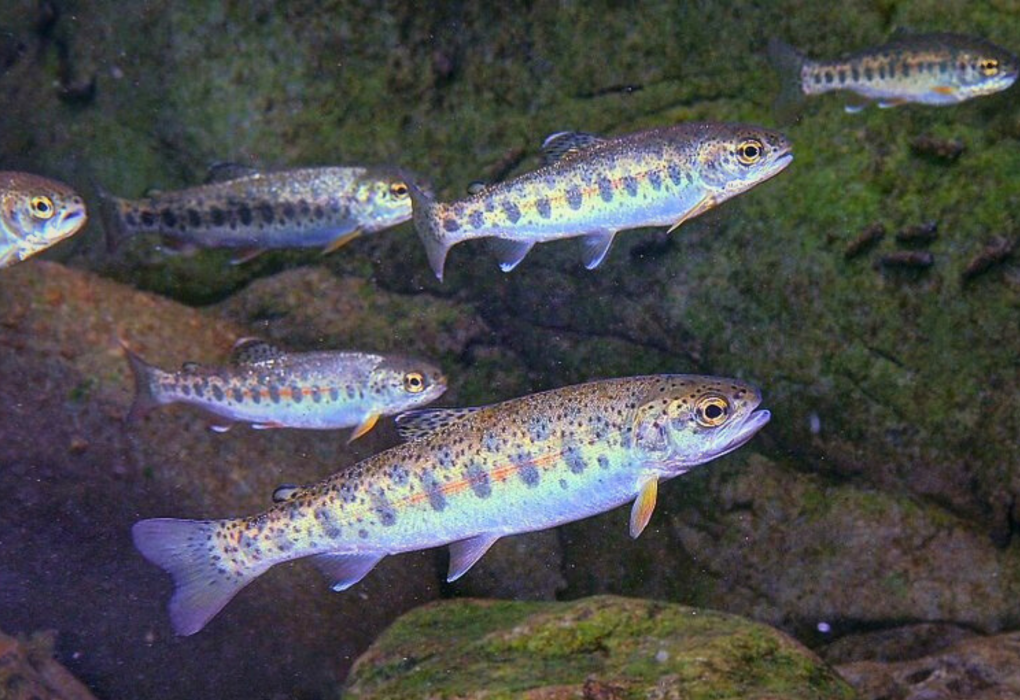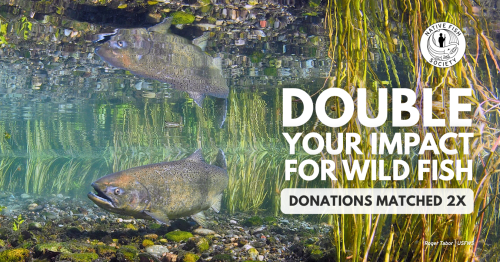Conservation groups express support for the community of Sweet Home, clean water, and native fish in Willamette River Basin
For Immediate Release: November 21, 2023
Media Contacts:
Mark Sherwood, Native Fish Society, mark@nativefishsociety.org
Jonah Sandford, Northwest Environmental Defense Center, jonah@nedc.org
Daniel Timmons, WildEarth Guardians, dtimmons@wildearthguardians.org
Conservation groups express support for the community of Sweet Home, clean water, and native fish in Willamette River Basin
PORTLAND, Ore. — Unintended consequences of a major court-ordered drawdown of Green Peter Reservoir have negatively impacted water quality in communities downstream of Green Peter Dam, such as Sweet Home, Oregon. The drawdown, overseen by the U.S. Army Corps of Engineers, was necessary to comply with the Endangered Species Act by providing safe passage for endangered wild Chinook salmon in the Willamette Basin. While drinking water continues to meet all state and federal standards, the implementation of the drawdown has compromised water quality in downstream communities and posed temporary challenges for drinking water treatment facilities. It has also resulted in the death of large numbers of non-native Kokanee salmon that are stocked for sport fishing.
As the conservation groups involved in the legal proceedings to restore the Willamette’s salmon, we empathize with the people of Sweet Home. The environmental movement is rooted in efforts to improve water quality for people and wildlife, and the consequences of the Corps’ long-standing failure to protect wild fish should not fall on the shoulders of the community of Sweet Home. All communities deserve clean and reliable drinking water, and we are committed to working with state and federal leaders to help craft a solution that provides immediate relief for Sweet Home and other impacted Oregonians. We will continue to express support for the health of the water, fish, and communities of the Willamette, to the benefit of future generations of Oregonians.
“Everyone deserves clean water, and the residents of Sweet Home are no exception,” said Mark Sherwood, Executive Director of Native Fish Society. “We strongly support efforts to provide relief for impacted communities in the short term, including resources to ensure that Sweet Home continues to provide clean water, while ensuring that these critical measures for wild fish move forward.”
Looking ahead, water quality conditions appear to be improving as the reservoir has reached minimum levels, and the Corps will begin refilling the reservoir in mid-December. And based on the data from previous drawdown measures in other reservoirs, turbidity levels in future years should not be as high as those seen during this first year of drawdowns. There may also be changes to drawdown operations going forward that could reduce turbidity and temperature issues. In particular, it is worth studying whether this year’s drawdown at Green Peter occurred too quickly, and if a slower drawdown in future years could help mitigate downstream water quality impacts.
Salmon are essential to the cultures, economies, and ecosystems in Oregon and across the Northwest. Protected and restored abundant populations of wild salmon and steelhead are critical to ensure Tribal and economic justice for river-dependent communities. Despite the issues that we have seen with this initial drawdown, deep drawdowns remain more effective—and much more cost-effective—than other fish passage measures proposed by the Corps.
“In the long-run, recovering wild salmon will bring tremendous benefits to local communities,” said Daniel Timmons, Wild Rivers Program Director for WildEarth Guardians. “But for now, we need to support those impacted by this national project to successfully navigate this changed landscape. We urge our Congressional representatives to act quickly to ensure towns like Sweet Home are not left responsible for the impacts of these drawdowns.”
“It’s imperative that we work together toward a holistic solution that benefits our wild fish, rivers, and communities,” said Jonah Sandford, Executive Director of Northwest Environmental Defense Center. “We need to move forward from this point to identify solutions to new challenges that are emerging, while continuing to take necessary measures to protect our rivers and wild fish.”
Background
The rivers in the Pacific Northwest once ran thick with wild salmon and steelhead, but Willamette River Chinook salmon and steelhead populations have been declining for decades. In recent years, just one to two percent of historic populations have returned to spawn in the Willamette and its tributaries. This decline is due in large part to the presence of eight dams in the basin, all of which are operated by the U.S. Army Corps of Engineers. The dams’ heights and large reservoirs make it nearly impossible for small fish to swim downstream and for adult fish to access spawning habitats upstream.
Because the Corps’ dam operations impact salmon and steelhead, the Endangered Species Act (ESA) requires the Corps to ensure its actions do not jeopardize these threatened species. A 2008 “Biological Opinion” from the National Marine Fisheries Service laid out a series of measures the Corps must implement at the dams to ensure it complies with the ESA and protects native Willamette River fish. Among other items, the Corps is required to undertake measures to improve juvenile and adult fish passage past the dams.
Unfortunately, since the Biological Opinion was issued, the Corps failed to implement required measures to address fish passage and other harmful impacts from the dams. As a result, significant harm to Willamette River Chinook and steelhead has continued to occur. In 2021, a federal judge confirmed that the Corps was violating the ESA, and ordered the implementation of several measures in an attempt to protect and restore these treasured Oregon species.
Several of the specific measures ordered by the judge involve deep drawdowns of reservoir levels. For more than a decade, expert scientists from both state and federal agencies have recommended such measures as a cost-effective means to improve fish passage and promote recovery of wild salmon. In fact, the Army Corps has been conducting annual deep drawdown operations at Fall Creek Dam since 2010, resulting in a ten-fold increase in salmon population numbers.
While the scientific community has long supported reservoir drawdowns, this is the first year that the Army Corps of Engineers has performed a deep drawdown of the Green Peter and Lookout Point reservoirs. The intent of the drawdowns is to provide a flowing current through the reservoir areas to allow ESA-listed juvenile Chinook salmon to swim through the dam regulating outlets - bypassing the more harmful turbines and avoiding expensive and ineffective “trap and haul” fish passage.
###
Native Fish Society, Guided by the best-available science we advocate for the protection and recovery of wild, native fish and promote the stewardship of the habitats that sustain us all. For more information, please visit: nativefishsociety.org
Northwest Environmental Defense Center works to protect the environment and natural resources of the Pacific Northwest. For more information, please visit: nedc.org
WildEarth Guardians is a conservation nonprofit whose mission is to protect and restore the wildlife, wild places, wild rivers, and health of the American West.


